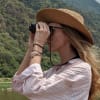How to Visit the Jewish Quarter NYC
Take a tour of New York's Jewish Quarter in Williamsburg: it will give you a fuller picture of the city and its contrasts.

Strolling along Lee Avenue | ©Hellotickets
I don't know if you've had the chance to see "Unorthodox" (if not, I recommend it), a Netflix series set in this very Jewish community, in which one of its members escapes to Berlin to escape the strict rules of her community.
We've said many times before that New York is much more than Manhattan, and this area is great proof of that. In the heart of Brooklyn, south of Williamsburg, you'll find a neighbourhood worth exploring.
What to see on a tour of New York's Jewish Quarter
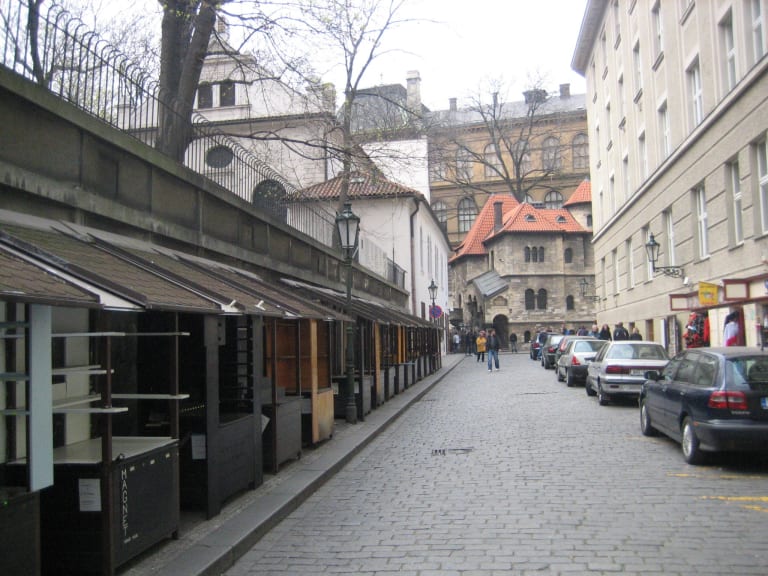
The best way to discover the Jewish Quarter is with one of the best tours in New York, the one that takes you to Williamsburg. With this two-hour guided walking tour, you ' ll get to know the highlights of this unique place for its culture and history.
On your tour you'll stroll across the Williamsburg Bridge or stumble upon the flea markets, where antiques and second-hand goods are sold and where you can mingle with the locals. Without a doubt, this neighbourhood is a 'must' to learn more about the customs and the cultural and social diversity that exists in this country.
Where is the Jewish Quarter and how to get there?
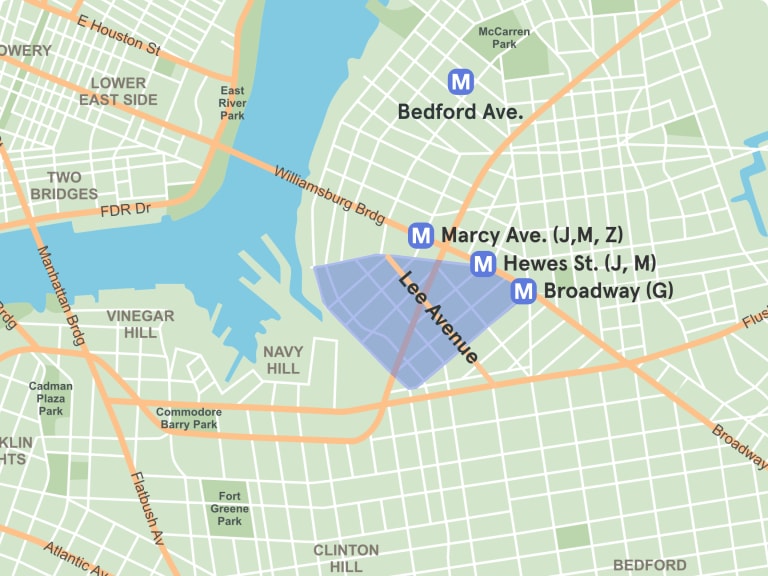
If you're going on your own, my advice is to take advantage of your visit to the most touristy part of Williamsburg and then discover the Jewish Quarter. Get off at the Bedford Ave stop (L line) and walk to the Jewish Quarter - it will take you less than 30 minutes and you'll be amazed by the contrast between the blocks!
If you take the underground directly here, you can get off at Marcy Avenue (J, M, Z lines), Broadway (G line) or Hewes Street (J and M lines). Check out the New York underground guide here to get the most out of New York's underground life.
What will I find in the Jewish Quarter?
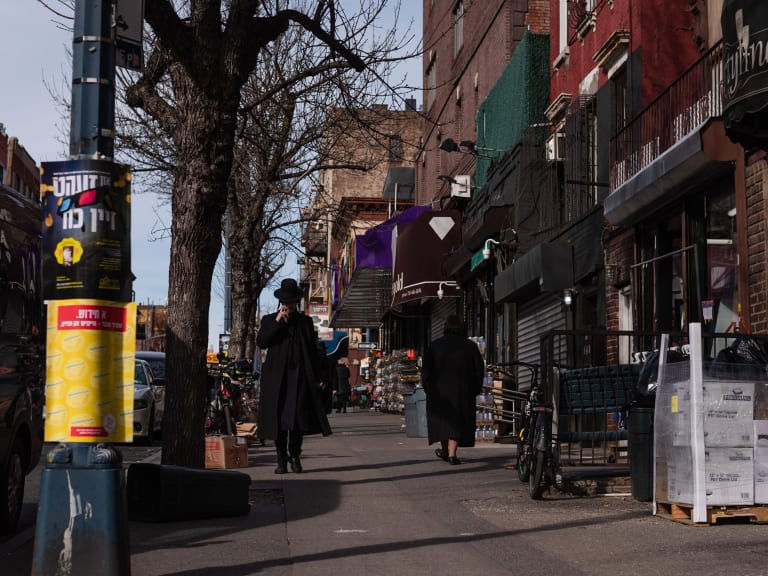
Compared to other areas of the neighborhood where street art, flirty shops and designer residences abound, the streets of South Williamsburg are austere and the buildings are simple, with weathered facades and most of them with bars on the windows.
In this area, much of the community lives on the poverty line . In many households, the men are engaged in Torah study, and have not received enough secular education to qualify for skilled jobs that would allow them to earn more. Therefore, women are the only source of income in these families who may have many children.
Is the Jewish Quarter safe?
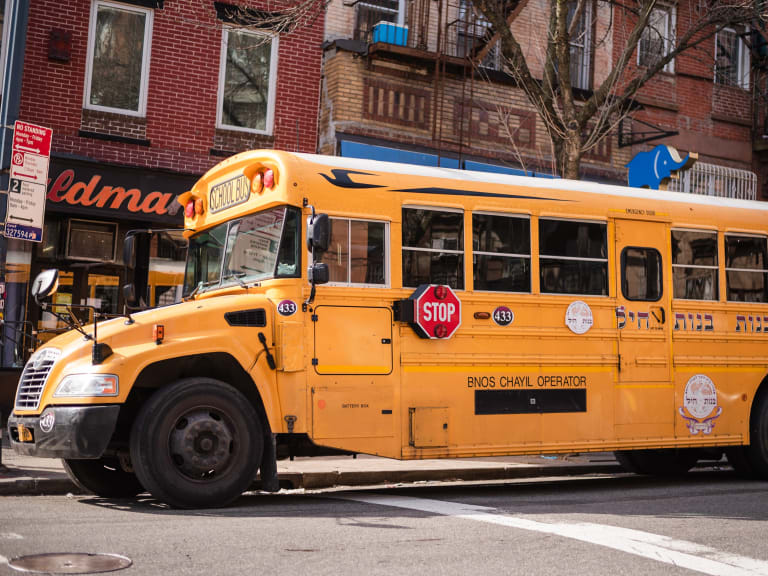
Yes, very. In fact, one thing that surprised me is that, unlike other poor neighbourhoods in New York, the crime rate in this one is low. Everyone in the community knows each other and helps each other out, so you can walk around and explore on your own without any problems.
How to visit the Jewish Quarter on your own
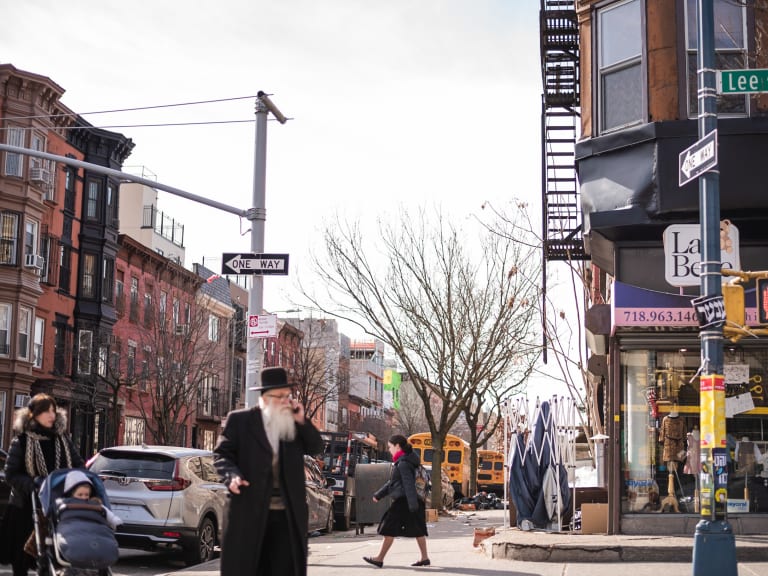
My main recommendation is to take a leisurely stroll through the streets, taking in the local shops, the temples, the customs... During your stroll through South Williamsburg, you will see that its restaurants and shops have signs in Hebrew, as well as the typical yellow school buses. If you can, I recommend that you go into a kosher shop and buy some sweets or bread.
But if there is one thing I recommend 100%, it is that before visiting the area, you should find out about their customs, in order to understand their way of life. I'll tell you everything you need to know before you get there.
What the Jewish community of Williamsburg is like
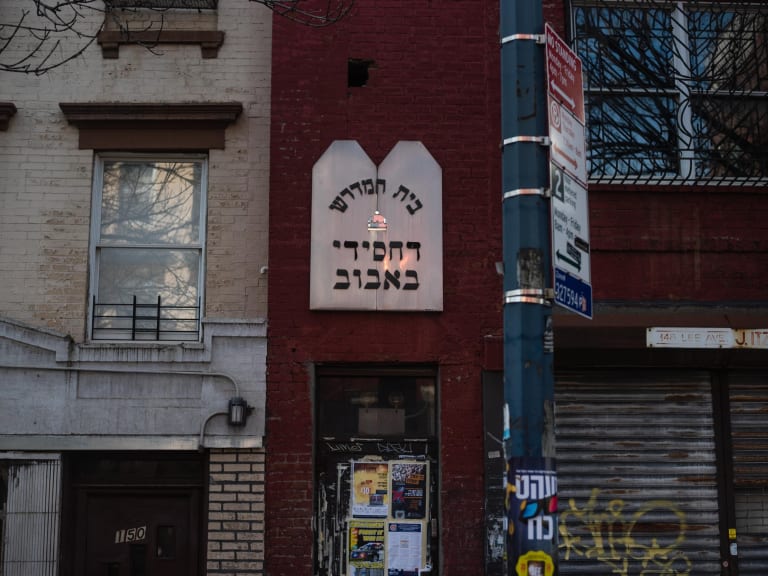
The Orthodox Jewish community of Williamsburg is the largest in the USA. Its inhabitants are Hasidic Jews (a branch within Orthodox Judaism) who came to the country from Hungary fleeing World War II and are characterised by their firm adherence to Halacha, the compilation of the main Jewish laws.
In a cosmopolitan city like New York, where there is a constant cultural mix, the hermeticism of this Orthodox Jewish community is striking, as they hardly mix with others. In fact, in the South Williamsburg neighbourhood they have absolutely everything: shops, banks, temples, schools, doctors... enough to make life easy without having to go out. It is like a city within a city.
What are the families of the Orthodox Jewish community like?
Unlike the modern world in which most human beings live, the Jewish community in Brooklyn is a very traditional community, so the roles of each member of the family are very well defined.
In general, marriages are almost always arranged between the rabbi and the family of each spouse, who are usually quite young. In the families, the introduction of the children is organised and, depending on the characteristics of each family, the rabbi writes down the name of the family member who could be connected to another family member.
Dress
Once married, women must shave their heads, as they are not allowed to show their hair in public. That's why you'll see them wearing a tichel or a wig when you walk around South Williamsburg. Their clothing is very simple, in keeping with the modesty expected of them: dark clothes, long skirts, stockings, flat shoes and no accessories.
As for the men, they wear white shirts with black jackets and trousers. As an accessory they wear a hat, which can be of different kinds:
- The kippah: a ritual beret with a sacred meaning that reminds us that nothing is higher than God.
- The wide-brimmed black felthat as a sign of respect to God.
- The Shtreimel: a fox fur and velvet hat worn by married men on Shabbat and other Jewish holidays.
Under the hat the men wear the peiot, long ringlets on each side of the head as prescribed by the Torah. In this way, according to one of the mithvahs, they distinguished themselves from the idolaters who shaved their sides. As for the beard that usually accompanies the peiot, it is grown to show that Jews are bound to a spiritual life and not to aesthetics or to the outside world.
Roles in the home
For most of the time, men devote themselves to prayer and Torah study, although there are some who work as tradesmen. In most cases, however, it is the women who are responsible for working as teachers or shop assistants to maintain the household, as well as raising the children, of which there are usually many, as they do not use contraception.
Children
The birth rate in Brooklyn's Jewish neighbourhood is very high. Each family has an average of six children. Most of the housing is located south of Division Avenue, but walk down any of the streets in South Williamsburg and you'll find yards and gardens where you'll see prams parked and children playing. You'll only see fathers with their sons on the Sabbath, when they go to synagogue together to pray.
Despite their young age, children also have standards to live up to in the community:
- Circumcision: Male children arecircumcised eight days after birth.
- Naming ceremony: This ceremony symbolises the official entry of girls into the Hasidic community.
On the other hand, it is customary for children in Orthodox Jewish families not to cut their hair until the age of three. This ceremony is called upsherin and marks the transition from being a baby to a child with a certain degree of independence.
Isabel's Traveller Tip
Go to Sander's Bakery at 159 Lee Avenue! They have a great variety of fresh produce at great prices. The cupcakes are my favourite. Yummy!
What it's like to visit New York's Jewish Quarter on a Saturday
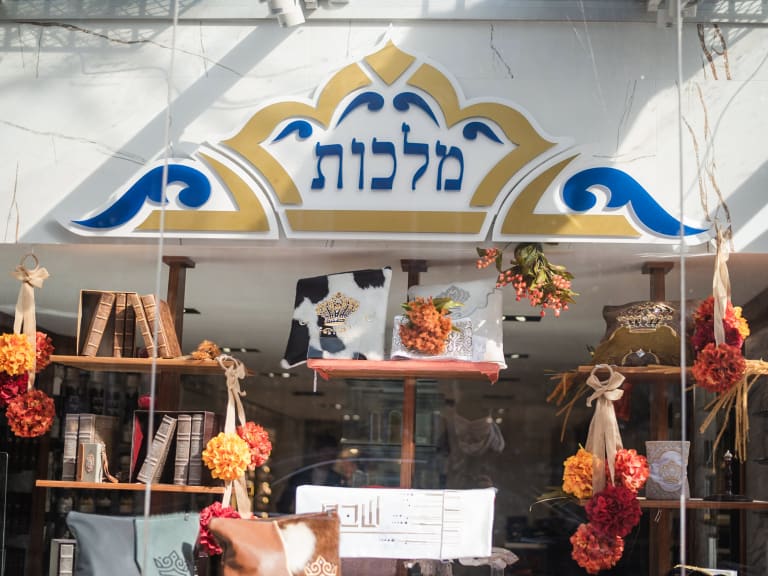
Unlike Christians and Sunday, the Jewish holy day is the Sabbath. A solemn day of rest when shops are closed, no work is allowed, and no other activities such as cooking, washing, driving or even writing are allowed.
That's why Fridays are a busy day in the community, as they have to get everything ready so that on Saturday they don't have to do anything but read sacred texts, sing and spend the day with their families and the synagogue.
As it is a public holiday, if your visit to Brooklyn coincides with the Sabbath you'll be able to see for yourself how this special day is experienced in South Williamsburg. On the streets you will see men and women dressed in their finest synagogue attire. In addition, the streets and parks are often filled with children playing. However, you will not have the opportunity to enter their shops as they will be closed.
Eruv, the invisible thread
As I said, during the Sabbath, Jews are not allowed to do a lot of things that involve work or physical exertion so as not to contravene Jewish law.
For this reason, the community came up with an ingenious solution called the eruv or free zone. This is a demarcation constructed with transparent wire with the intention of establishing a perimeter where certain activities such as pushing a pushchair or a wheelchair can be done without breaking the law.
In fact, as Lee Avenue has just begun, if you look closely you can see a thread that encircles several areas of the neighbourhood creating this safe space. It should be in perfect condition with no breaks in any of the streets it runs through. If not, on Friday morning a maintenance crew fixes it under the supervision of a rabbi so that by Friday afternoon, when Shabbat begins, everything is ready. And you may not believe it, but there are some 30 kilometres of eruv in Manhattan.
Travel responsibly
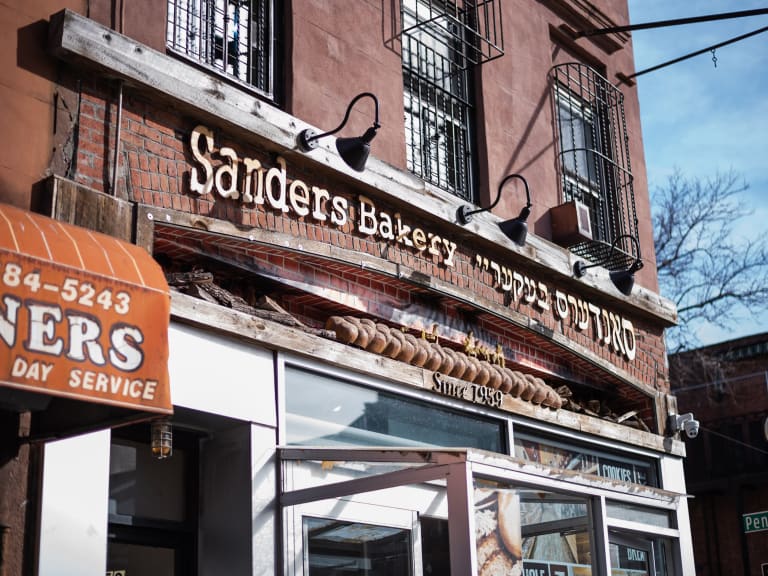
Visitors don't pay much attention and are used to seeing them pass through the neighbourhood, but you'll want to be considerate on your tour of South Williamsburg. The streets of Brooklyn's Jewish Quarter are no mere decoration for tourists.
Even if their clothing, hairstyles or other details catch your eye, try not to make them feel uncomfortable and don't stare at them with curiosity. Be respectful when taking pictures because they don't like to be the constant focus of cameras.
Social norms
During the visit to South Williamsburg I remember the culture shock was great. It is surprising to see children and women walking on one side and men walking on the other in groups separated by different approaches.
In addition, men never look women directly in the eye as this would be a way of being incited to sin. They usually walk with their eyes glued to the ground. In fact, you will notice that when tourists pass through the neighbourhood, the locals ignore them. It is rare for people from Williamsburg 's Jewish community to interact with people from outside the neighbourhood.
Other visiting tips
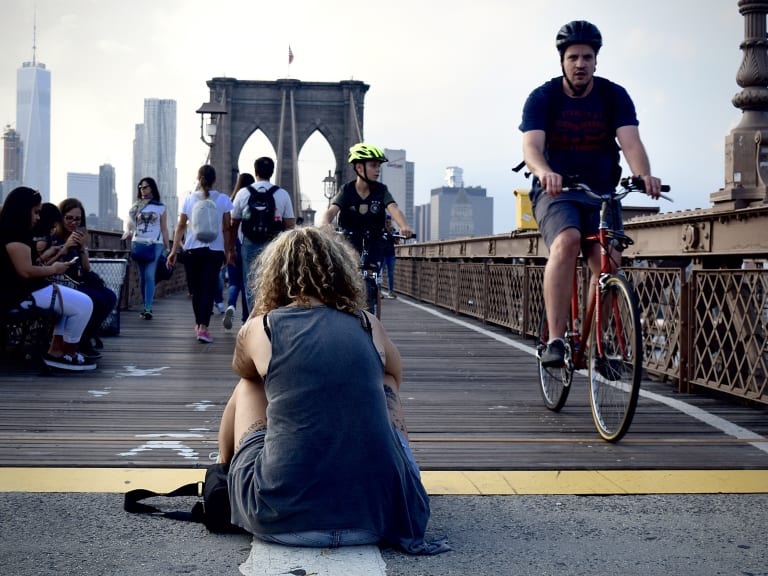
Visiting the Jewish Quarter is a must-do on your trip to New York. If you feel like touring Brooklyn with a guided tour, you should know that there are some tours of New York in Spanish that cover this area, with the advantage that you can ask the guide all your questions and ask for all the recommendations you need. If you decide to take the New York contrasts tour, for example, you'll tour the city from north to south and end the tour in Brooklyn.
It's a great way to experience the cultural contrasts of the city while putting them into a historical context that will help you understand how dozens of cultures coexist in this great city.
